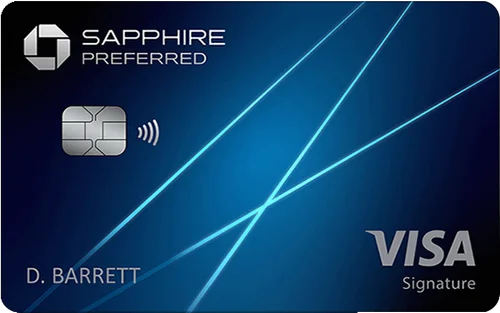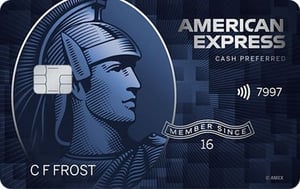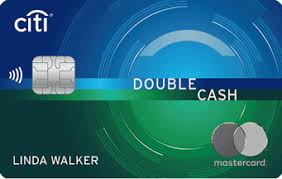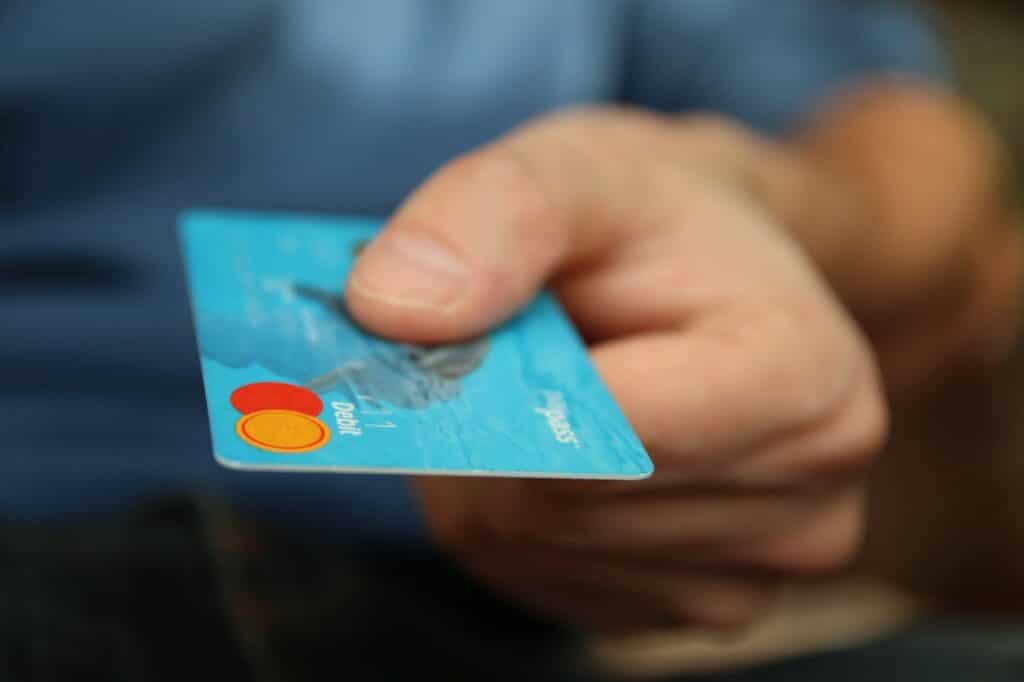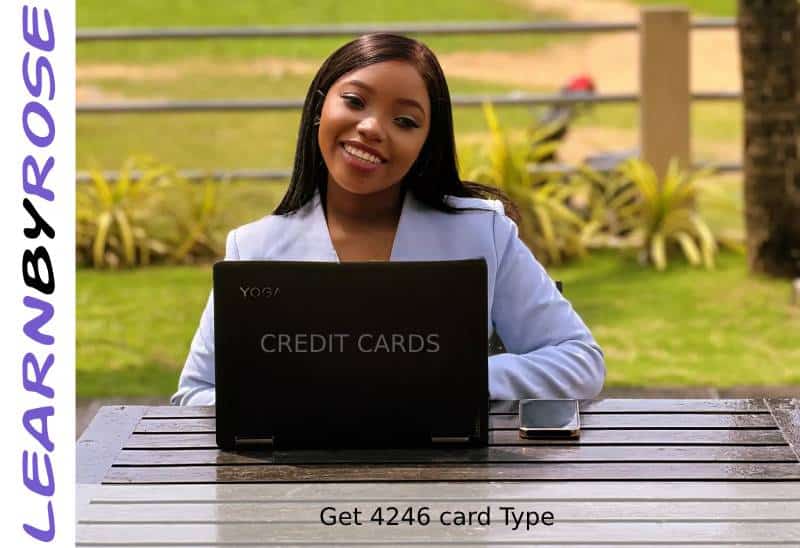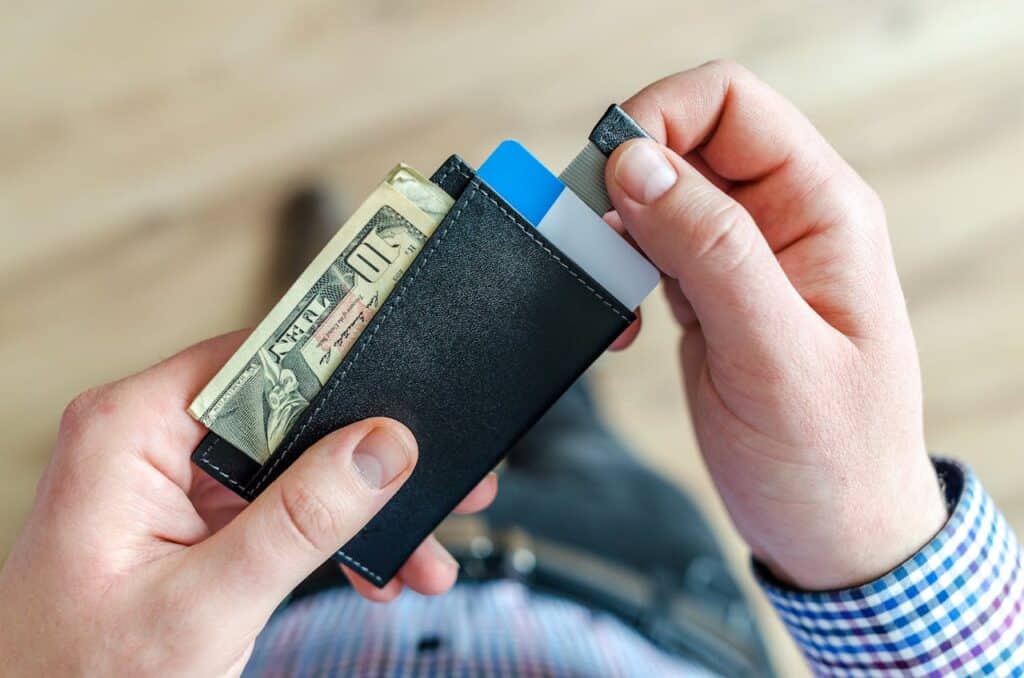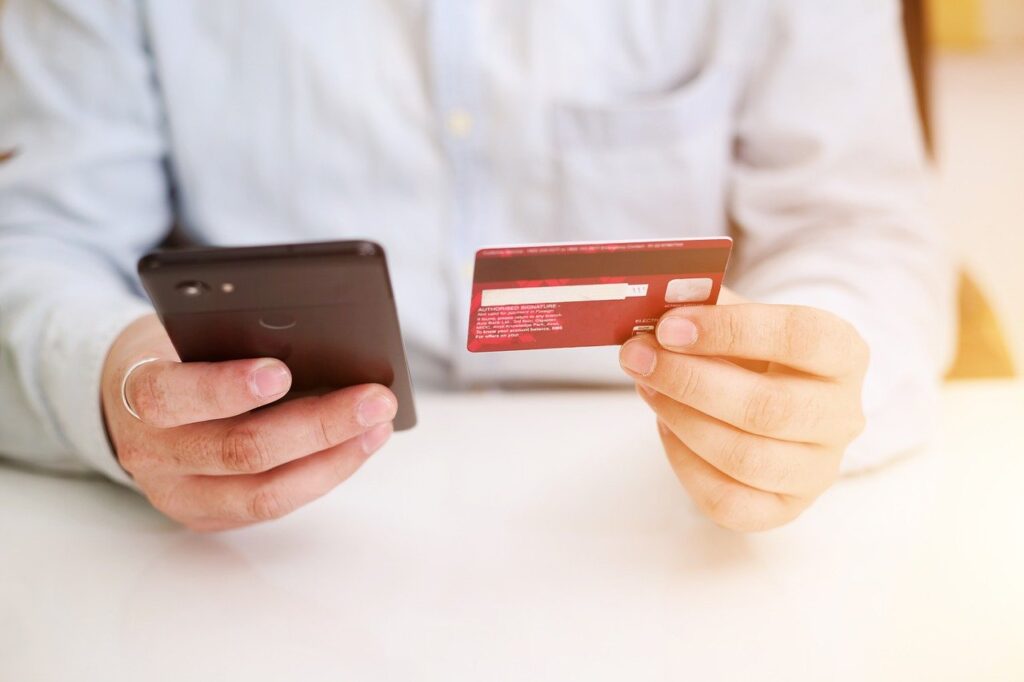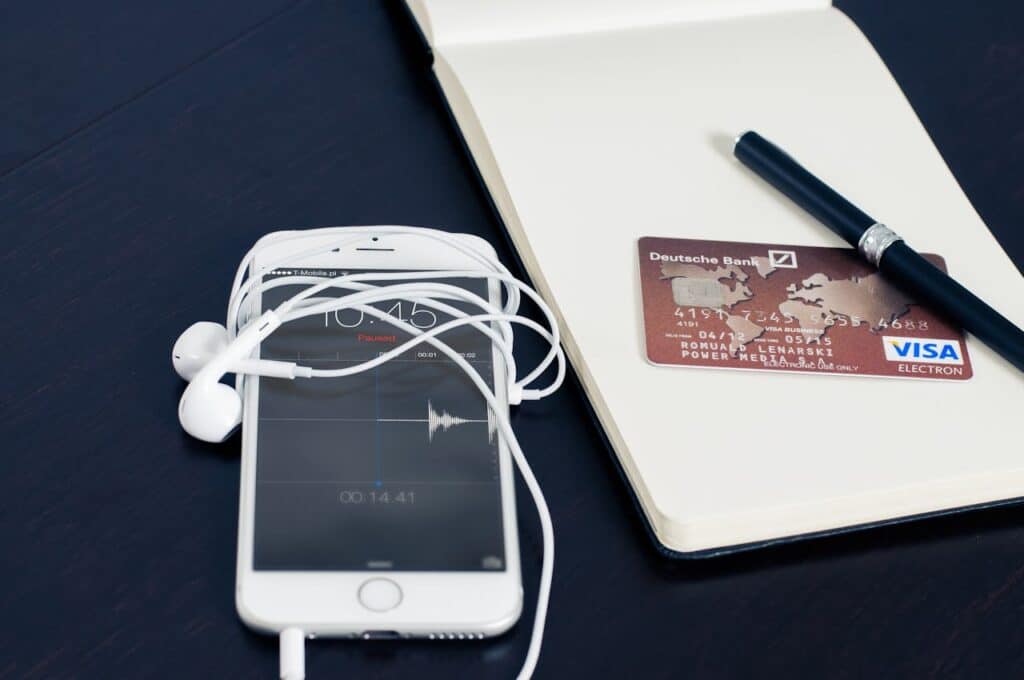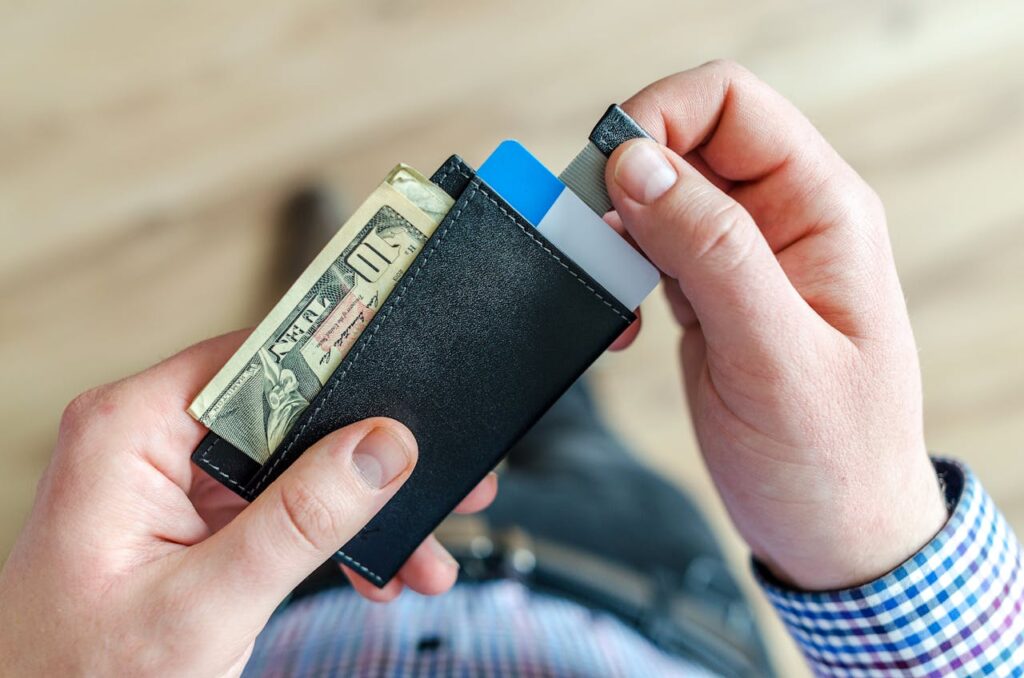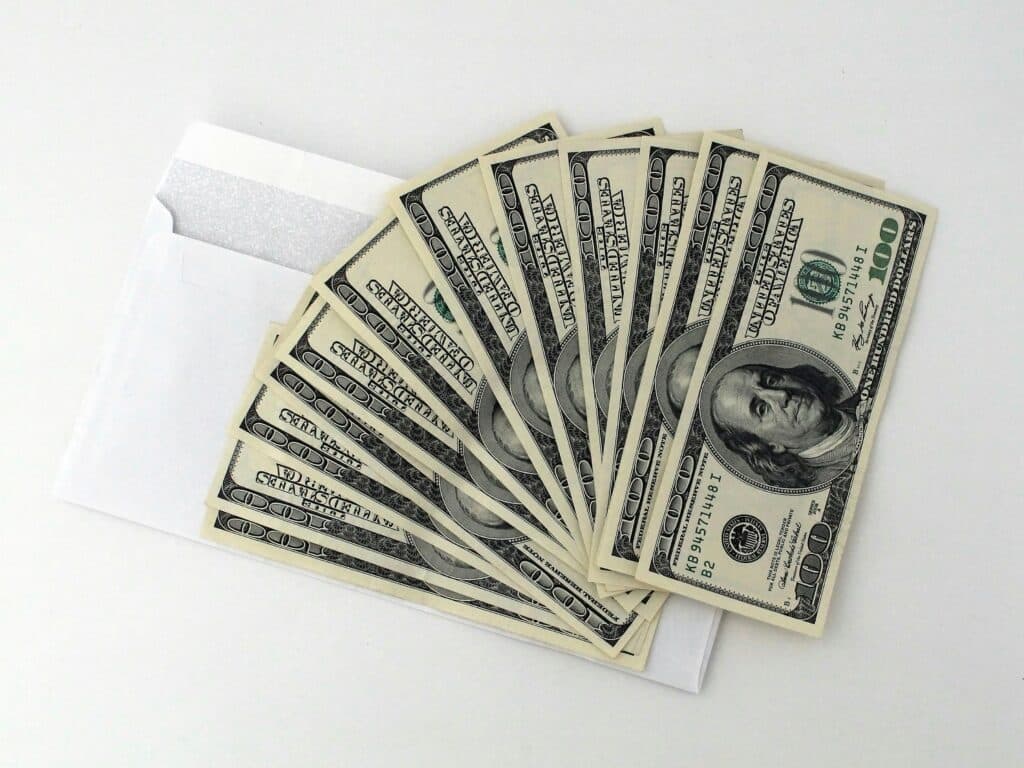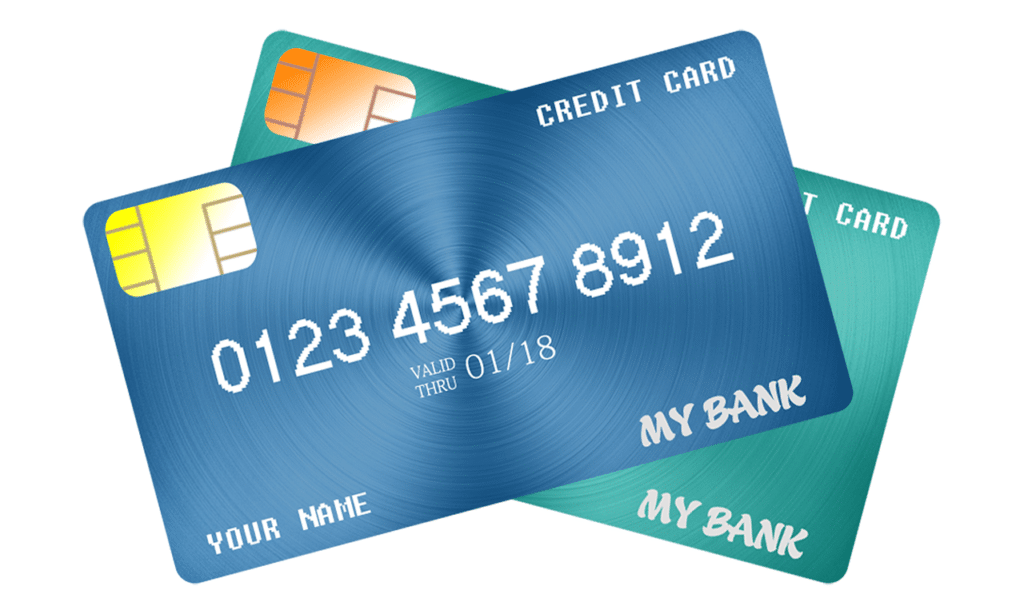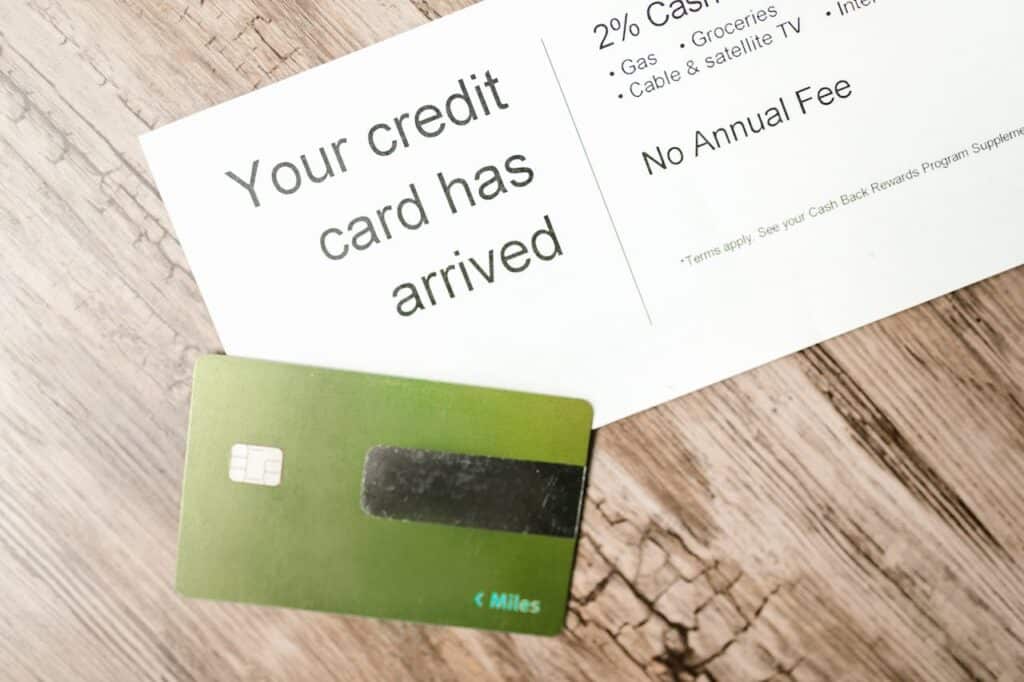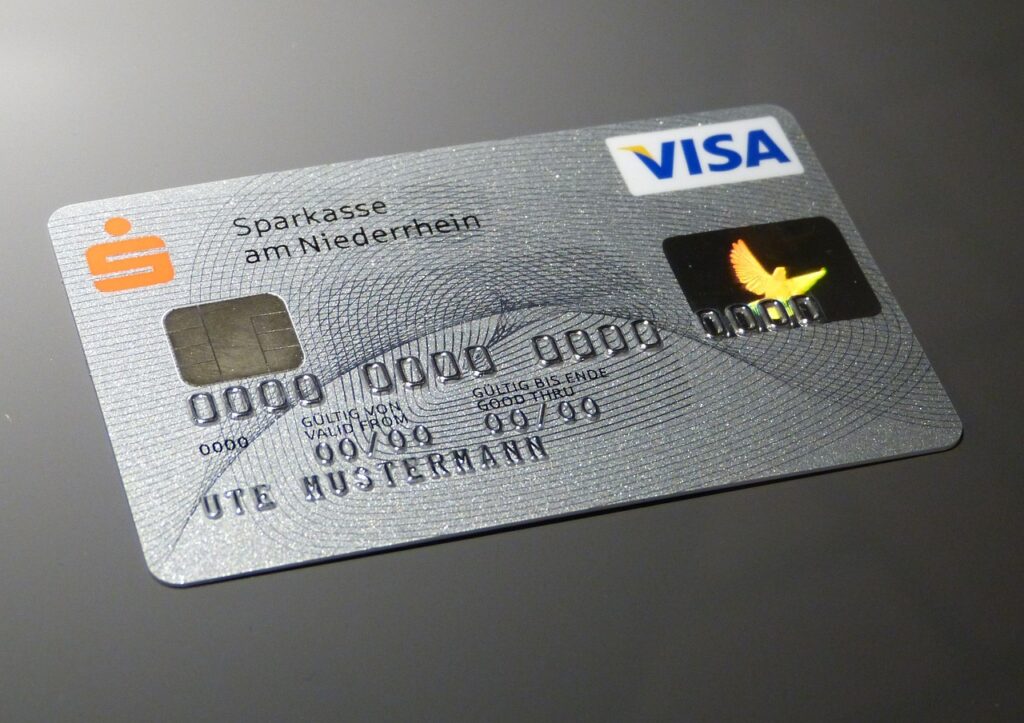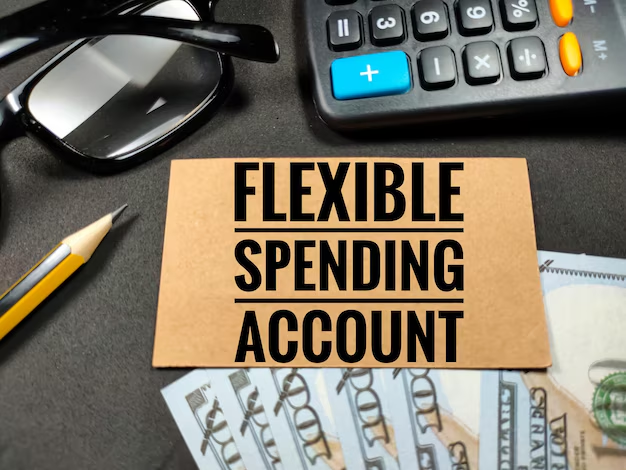For many, having a good credit score feels like a key to financial freedom, enabling access to loans, better interest rates, and higher credit limits. However, life can throw unexpected financial challenges, leading to less-than-perfect credit scores. If you have a low credit score, credit cards designed specifically for bad credit can be valuable tools to rebuild your credit history and offer a fresh start in the financial world.
What Are Credit Cards for Bad Credit?
Credit cards for bad credit are specialized cards available to individuals with low or damaged credit scores. Unlike typical credit cards, they cater specifically to people with lower credit scores by often having modified terms, such as lower credit limits, fewer perks, or higher fees. These cards are a stepping stone, offering people a second chance to improve their financial standing, build better credit habits, and demonstrate financial responsibility.
Popular options include secured credit cards, which require a refundable deposit as collateral, and certain unsecured credit cards for people with bad credit, which don’t require a deposit but may come with higher fees or interest rates. While some may wonder about the practicality of these cards, they can be extremely effective when used responsibly and offer an opportunity for individuals to regain control over their financial future.
The Importance of Credit Scores and Why They Matter
Your credit score is more than just a number—it’s a reflection of your financial history and behavior. Lenders, landlords, employers, and insurance companies often review credit scores to assess financial trustworthiness. The impact of a low credit score extends beyond loan applications; it can affect your housing, employment opportunities, and even insurance premiums.
Credit scores are typically divided into ranges:
- Excellent: 750–850
- Good: 700–749
- Fair: 650–699
- Poor: 600–649
- Bad: Below 600
Having a score in the “bad” range may limit options, but the good news is that dedicated credit cards for bad credit, such as secured credit cards for bad credit and even some unsecured options, can help you improve your score when used responsibly.
What Causes Bad Credit?
Many factors can lead to bad credit, and understanding them can help you avoid common pitfalls and work toward rebuilding a healthier score. Here are some of the most common causes:
- Missed or Late Payments: Creditors report missed or late payments to credit bureaus, which can significantly impact your credit score.
- High Credit Utilization: Using a high percentage of your available credit indicates a greater reliance on credit, which can lower your score.
- Maxed-Out Cards: Consistently using all available credit limits signals high credit dependency, a red flag to lenders.
- Defaulted Loans or Bankruptcy: Serious financial difficulties, like loan defaults or bankruptcy, have a substantial and long-lasting effect on credit.
- Frequent Credit Applications: Applying for multiple credit cards or loans in a short period can indicate financial instability, slightly lowering your score each time.
- Lack of Credit History: A short or limited credit history may make it challenging for lenders to gauge your financial behavior.
If you’re struggling with one or more of these challenges, you’re not alone. Many people find themselves in need of specialized credit cards to improve their standing. Credit cards for bad credit, including credit builder credit cards for bad credit and options like guaranteed approval credit cards with $1,000 limits for bad credit with no deposit, can provide tools to get back on track.
Secured vs. Unsecured Credit Cards for Bad Credit
Choosing between secured and unsecured cards is one of the most significant decisions for those with bad credit. Both have pros and cons, and understanding the differences can help you find the right solution based on your needs.
Secured Credit Cards for Bad Credit
Secured credit cards require a cash deposit, which serves as collateral for the credit limit. Typically, the deposit matches your credit line, meaning if you put down a $300 deposit, your credit limit will be $300. Because the issuer has your deposit as security, these cards are easier to obtain even with very low credit scores. They also report to major credit bureaus, allowing cardholders to rebuild credit through responsible use.
Pros of Secured Credit Cards:
- Easier approval process for people with poor credit.
- Helps to rebuild credit when used responsibly.
- Often provides lower fees compared to unsecured options for bad credit.
Cons of Secured Credit Cards:
- Requires an upfront deposit, which may not be feasible for everyone.
- Limited credit limit until the deposit is increased.
Secured credit cards are excellent for those committed to improving their financial habits. Some of the best secured credit cards for bad credit offer additional benefits like no annual fees, lower APRs, and even rewards programs.
Unsecured Credit Cards for Bad Credit
Unsecured credit cards for bad credit do not require a deposit. However, these cards may have higher interest rates and annual fees to offset the risk to lenders. They can be a good option for those who don’t have the cash available for a security deposit but still want to work on rebuilding their credit.
Pros of Unsecured Credit Cards:
- No upfront deposit required, making them more accessible for people with limited funds.
- Often provides a variety of card options with different features.
Cons of Unsecured Credit Cards:
- Higher interest rates and fees are common.
- Approval can be difficult if credit scores are too low.
Some companies offer guaranteed approval credit cards for bad credit with limits up to $1,000, giving cardholders a starting point to rebuild their credit without needing a deposit. These cards may be appealing, but it’s essential to review terms carefully, as fees and interest rates can vary significantly.
Tips on Choosing a Credit Card for Bad Credit
Finding the right credit card when you have a low credit score can be overwhelming. With so many choices available, it’s essential to identify what features and terms best align with your needs. Here are some tips to help you choose the best credit card for bad credit, whether you’re considering secured credit cards for bad credit, unsecured credit cards, or guaranteed approval credit cards with $1,000 limits for bad credit no deposit.
1. Look at Interest Rates and Fees
Credit cards for people with bad credit often come with higher interest rates. Carefully review the card’s annual percentage rate (APR) and any associated fees, such as annual fees, monthly maintenance fees, or processing fees. Ideally, look for low-interest credit cards for bad credit or credit cards with no annual fee for bad credit, which can help you avoid extra costs while rebuilding your credit.
2. Consider Secured vs. Unsecured Options
While secured credit cards for bad credit require a deposit, they typically have lower fees than unsecured options. If upfront funds are an issue, consider guaranteed approval credit cards with $1,000 limits for bad credit no deposit. These cards can provide access to credit without requiring a deposit but may have higher interest rates or fees. Consider your financial flexibility and choose a card type that matches your current budget and needs.
3. Choose a Card That Reports to Major Credit Bureaus
The purpose of using credit cards for bad credit is to improve your credit score. Cards that report your activity to major credit bureaus (Equifax, Experian, and TransUnion) are essential, as they allow you to build a positive credit history. Ensure that your chosen card will help you move closer to your goal of improving your credit score.
4. Look for Cards With Credit-Building Features
Some credit cards for bad credit offer helpful credit-building tools, like free access to your credit score, credit monitoring, and alerts. These tools can help you track your progress and stay informed about your financial health. Many credit building credit cards for bad credit come with these features, making them excellent choices for those focused on improving their credit.
5. Compare Rewards and Incentives
Though rewards are less common on cards for bad credit, some secured and unsecured credit cards for bad credit still offer perks like cash back, points, or even travel rewards. If rewards are important to you, compare credit cards for bad credit to find those that provide incentives without high fees. This way, you can earn benefits while also working on your credit score.
Perks to Look Out for on Cards with Bad Credit
Even if you’re applying for a credit card with bad credit, you don’t have to settle for less. Many cards offer valuable perks that can help you manage finances effectively and get more out of your card.
1. Low Deposit Requirements
Secured credit cards typically require a deposit, but some offer low deposit options, which are helpful for people with limited funds. Low deposit secured credit cards for bad credit can be a great way to start building credit without a significant upfront cost.
2. No Annual Fee
Some credit cards for bad credit have no annual fees, helping you save money while rebuilding your credit. Look for credit cards for bad credit no annual fee as a cost-effective option, especially if you’re looking to avoid additional expenses.
3. Access to Credit Score and Monitoring
Certain credit cards provide free access to your credit score and credit monitoring. This feature is valuable for people aiming to improve their credit, as it helps you keep track of your score and progress. Many credit cards for rebuilding bad credit include this perk, making it easier to stay on top of your financial goals.
4. Credit Line Increases
Some credit cards for people with bad credit allow for credit line increases after several months of responsible use. This can be beneficial, as a higher credit limit can improve your credit utilization ratio—a critical factor in calculating your credit score. Look for high limit credit cards for bad credit that offer this feature as a reward for good payment behavior.
5. Rewards Programs
While not as common, some credit cards for bad credit offer rewards, such as cash back or points. These programs can be advantageous if you use your card responsibly and pay off the balance each month. Cash back credit cards for bad credit, for example, allow you to earn rewards on everyday purchases, giving you extra value as you work on improving your credit.
How to Apply for a Credit Card for Bad Credit
If you’ve decided to apply for a credit card to start building or rebuilding your credit, following a structured process can increase your chances of approval and ensure you’re making the best choice. Here’s a step-by-step guide on how to apply for a credit card for bad credit.
Step 1: Check Your Credit Score
Before applying for any credit card, it’s helpful to understand where your credit stands. You can access a free credit report from each of the three major credit bureaus once a year at AnnualCreditReport.com. Reviewing your score will give you a clearer idea of which cards you qualify for, whether that’s a secured card, an unsecured card, or guaranteed approval credit cards with $1,000 limits for bad credit no deposit.
Step 2: Research Available Credit Card Options
There are many credit cards available for people with bad credit, each with its own set of terms and features. Consider secured cards if you’re willing to make a deposit, or look into pre-approval credit cards for bad credit, which can provide an indication of your approval odds without affecting your credit score. Compare credit cards for bad credit to find options that best meet your needs.
Step 3: Consider Pre-Qualification
Some issuers allow you to pre-qualify for credit cards for bad credit without a hard credit check. Pre-qualification can give you an idea of your likelihood of approval and help you avoid unnecessary credit inquiries, which can further lower your score. Look for pre-approved credit cards for bad credit with no deposit if you want to avoid upfront costs.
Step 4: Gather Necessary Information
When applying for a credit card, you’ll typically need to provide:
- Personal identification details, such as your name, address, and Social Security number.
- Income information, as issuers use this to determine your ability to repay.
- Employment information, which can influence your approval chances.
Having this information ready can streamline the application process and make it quicker.
Step 5: Complete the Application
Once you’ve selected the best credit card for bad credit based on your needs, complete the application either online, in person, or by phone. Double-check that all information is accurate before submitting it. Many credit card applications provide an instant decision, while some may take a few days to review.
Step 6: Await Approval and Receive Your Card
After you submit your application, the credit card issuer will review your information. If approved, you’ll typically receive your card within 7–14 business days. If you applied for a card with instant approval and instant use, such as a virtual credit card for bad credit, you may receive a temporary card number to use online right away.
Step 7: Activate Your Card and Set Up Online Access
Once your card arrives, follow the activation instructions provided. Setting up online account access is also helpful, as it allows you to monitor your spending, pay your bill, and track your credit score if available.
With your card in hand, you’re ready to start using it responsibly to build or improve your credit. Remember to make on-time payments, keep balances low, and avoid unnecessary fees.
How to Build Your Score if You Have Bad Credit
If you have a low credit score, it’s essential to adopt strategies that help improve it gradually. Credit cards designed for bad credit can be powerful tools to build your score over time. Here’s how to approach this process effectively.
1. Start Small with Your Credit Usage
Keeping your spending within a reasonable limit is critical for building credit. Aim to keep your credit utilization (the percentage of credit you’re using out of the total limit) low, ideally below 30%. For instance, if you have a secured card with a $500 limit, try to keep your balance under $150. Using a credit card for bad credit with low credit utilization shows responsible usage and can positively impact your score.
2. Pay Off Balances in Full and On Time
Making timely payments is one of the most significant factors affecting your credit score. Set reminders or use automatic payments to ensure you don’t miss due dates. Paying off the balance in full each month also helps avoid interest charges. Most credit building credit cards for bad credit report to credit bureaus, meaning consistent, on-time payments will reflect positively in your credit report.
3. Avoid Applying for Multiple Cards at Once
Applying for several credit cards in a short period can harm your credit. Each application triggers a hard inquiry, which can lower your score. Instead, apply for a credit card that’s a good match for your needs, like an easy approval credit card for bad credit or even a guaranteed approval credit card with a $1,000 limit and no deposit if available. Limit your applications to avoid unnecessary credit score dips.
4. Monitor Your Credit Regularly
Keeping an eye on your credit report helps you track your progress and ensures there are no errors. Many credit cards for bad credit offer free access to your credit score or credit monitoring. If errors appear on your report, disputing them can improve your score.
5. Use Credit-Building Tools
Certain credit cards offer tools like free credit monitoring and alerts, which can assist you in tracking your score and understanding how different behaviors impact it. Consider cards that offer these features, as they make the journey toward better credit more manageable and transparent.
How to Raise Your Credit Score Using a Credit Card
Building credit can seem daunting, but using a credit card responsibly is one of the most straightforward ways to improve your score. Here’s a step-by-step guide to help you raise your credit score using a credit card for bad credit.
Step 1: Choose the Right Credit Card
Selecting a card designed to help with credit building is the first step. Look into options such as secured credit cards for bad credit or unsecured cards with easy approval processes, like guaranteed approval credit cards with $1,000 limits for bad credit no deposit. These options provide access to credit while allowing you to build your score over time.
Step 2: Make Small, Regular Purchases
A key to improving your credit is to demonstrate consistent, responsible use. Rather than maxing out your card, make small purchases you can pay off quickly. Regular usage—paired with prompt payments—shows lenders you can manage your credit responsibly.
Step 3: Pay Your Balance in Full Each Month
If possible, pay your full balance each month to avoid interest charges. Not only does this save money, but it also reinforces positive payment behavior on your credit report. Credit cards for bad credit with no deposit or secured options often report payment history to credit bureaus, so timely payments will help improve your score over time.
Step 4: Keep Your Credit Utilization Low
Maintaining a low credit utilization ratio is crucial for building credit. Aim to use no more than 30% of your available credit limit. This metric plays a significant role in your credit score calculation, so staying below this threshold will positively impact your score.
Step 5: Review Your Credit Report for Errors
Checking your credit report for errors periodically can also protect your score. Discrepancies, such as incorrect account balances or late payments that aren’t yours, can drag down your score. If you identify errors, disputing them promptly can lead to a score increase.
Step 6: Wait and Be Patient
Building credit takes time, especially when starting from a low score. Even with consistent good habits, your score won’t improve overnight. However, responsible use of credit cards for bad credit—such as paying on time, keeping balances low, and checking your report—will help your score gradually improve.
When to Use a Credit Card for Bad Credit
Credit cards for bad credit can be highly effective in helping you rebuild your credit profile. However, they’re not always the right choice for every situation. Here are some circumstances when using a credit card for bad credit might be advantageous.
1. If You’re Working to Improve Your Credit Score
If you’re committed to improving your credit score, using a credit card responsibly can demonstrate positive financial behavior. With options like credit cards for bad credit instant approval and secured credit cards, you have a path toward building a better credit history.
2. When You Need an Emergency Safety Net
Credit cards can act as a backup in emergencies, covering unexpected expenses. A credit card for bad credit with no deposit or a secured card with a reasonable limit can provide financial support during tough times. However, only rely on credit in emergencies if you can make timely payments afterward, as missed payments could further harm your credit.
3. If You’re Rebuilding Credit After a Major Financial Setback
Whether due to bankruptcy, defaulted loans, or other financial challenges, credit cards for rebuilding bad credit can provide a valuable way to rebuild your profile. Using a credit card for bad credit to make small purchases and paying them off regularly shows lenders your improved financial habits.
4. When You Want to Start Earning Rewards
Some credit cards for bad credit offer rewards like cash back or points, providing value even as you work on your credit score. If you’re comfortable managing a rewards card responsibly, you can earn perks while also building credit. Look for rewards credit cards for bad credit if this aligns with your goals.
5. When You Don’t Have Immediate Cash for a Deposit
If you need a card without paying an upfront deposit, consider unsecured cards designed for people with low credit scores, like unsecured credit cards for bad credit guaranteed approval or instant approval options. These cards may come with higher fees or interest, but they offer credit access without requiring initial funds.
How to Tell if You Need a Credit Card for Bad Credit
Understanding when a credit card for bad credit might be beneficial is essential to making informed financial decisions. Not everyone with a low credit score needs a new credit card; however, if you’re looking to rebuild your credit profile, the right card can be an invaluable tool. Here are some situations where a credit card for bad credit could be the right choice.
1. You Want to Rebuild Your Credit Score
If you’re determined to improve your credit score, credit cards for bad credit can offer a structured path forward. With options like credit builder credit cards for bad credit, these cards report your on-time payments to major credit bureaus, helping you create a history of responsible credit use that raises your score over time.
2. You’re Facing Challenges Getting Approved for Standard Credit Cards
If you’ve recently been turned down for a traditional credit card, this could indicate that your credit score is too low for approval. Instead, consider pre-approved credit cards for bad credit or guaranteed approval credit cards with $1,000 limits for bad credit no deposit. These options have less stringent approval criteria, making it easier to qualify even if your score is low.
3. You Need an Account That Reports to Credit Bureaus
Using a credit card that reports to credit bureaus can be an essential factor in building your score. Credit building credit cards for bad credit typically report your payment history monthly, providing a record of responsible use that can positively influence your credit profile.
4. You Need Access to Credit but Have Limited Funds for a Deposit
If you’re seeking a card without upfront deposits, unsecured credit cards for bad credit can provide access to credit without requiring initial funds. Options like guaranteed approval credit cards with no deposit are available, though they often have higher fees. Reviewing these options carefully can help you choose one that aligns with your financial goals.
What’s the Easiest Credit Card to Get Approved For?
For individuals with low credit scores, finding a credit card that offers a straightforward approval process can be challenging. Here are some of the easiest credit cards to get approved for, particularly if you have a poor credit history.
1. Secured Credit Cards for Bad Credit
Secured credit cards are generally the easiest credit cards to get approved for with bad credit. Since they require a refundable deposit, they’re accessible even to people with very low credit scores. Some of the best secured credit cards for bad credit allow for lower deposit amounts and often report to major credit bureaus, supporting your efforts to build credit responsibly.
2. Guaranteed Approval Credit Cards with $1,000 Limits for Bad Credit No Deposit
If you prefer not to make a security deposit, certain cards offer guaranteed approval with $1,000 limits. These guaranteed approval credit cards with $1,000 limits for bad credit no deposit are specifically designed to provide credit access to those with low scores. However, it’s essential to check for any potential fees associated with these cards, as they sometimes come with higher costs due to the increased risk for the issuer.
3. Pre-Approval Credit Cards for Bad Credit
Pre-approval credit cards for bad credit allow you to check your eligibility without a hard inquiry, giving you a sense of your approval chances without impacting your credit score. This approach can be ideal for individuals looking to explore their options without taking on unnecessary credit inquiries.
4. Retail Credit Cards for Bad Credit
Some retail credit cards are known for easier approval standards and may be an option if you’re aiming to build credit. Retail credit cards for bad credit often have lower limits and may be usable only at specific stores, but they can serve as a stepping stone in improving your score over time.
The Costs of Bad Credit
Having bad credit can lead to numerous financial consequences, some of which may not be immediately apparent. Here’s a look at the costs associated with bad credit and how they can affect your financial life.
1. Higher Interest Rates on Loans and Credit Cards
Individuals with low credit scores are often subject to higher interest rates when they’re approved for loans or credit cards. For instance, high limit credit cards for bad credit or unsecured credit cards for bad credit may have interest rates above 20%, making it costly to carry a balance month to month. This increase in interest costs can quickly add up, creating an ongoing financial burden.
2. Increased Insurance Premiums
Insurance companies frequently use credit scores as a factor when determining premiums. A poor credit score can lead to higher premiums on car, home, and even health insurance. Bad credit can thus impact expenses beyond credit cards and loans, affecting various aspects of your monthly budget.
3. Limited Access to Rental Housing
Landlords often check credit reports before approving a rental application. Bad credit can make it more difficult to secure housing, and landlords may require a larger security deposit to offset the perceived risk. Having access to guaranteed credit cards for bad credit can be a way to start improving your credit profile, making future rental applications easier.
4. Difficulty Accessing Emergency Funds
With a low credit score, obtaining emergency financing can be challenging. Some people in this situation might look into options like credit cards for bad credit with no deposit instant approval to gain a safety net for unexpected expenses. However, these cards can sometimes come with higher fees and limits, so they should be used thoughtfully.
5. Fewer Employment Opportunities
Certain employers conduct credit checks as part of their hiring process. A low credit score could impact job opportunities, especially in industries like finance and security. Improving your credit can thus help not only with financial opportunities but also with career prospects.
Choosing a Credit Card for Bad Credit
Choosing the best credit card for bad credit requires careful consideration of several factors. Given the variety of options available, it’s essential to compare credit cards for bad credit that align with your unique financial needs and credit-building goals. Here’s a guide to help you make an informed decision.
1. Look for Credit Cards with No Security Deposit
If you’re not able to make a deposit upfront, consider credit cards for bad credit with no security deposit. These unsecured cards offer credit access without requiring an initial deposit. While some unsecured credit cards for bad credit with no security deposit come with higher fees, they provide a convenient way to start building credit without tying up your cash in a security deposit.
2. Consider Pre-Qualified Credit Cards for Bad Credit
Some lenders offer pre-qualified credit cards for bad credit, which allow you to check your eligibility without affecting your credit score. This is especially useful if you’re exploring various options and want to avoid multiple hard credit inquiries. Pre-qualified credit cards for bad credit provide a safer approach to shopping for credit without the risk of lowering your score further.
3. Compare High Limit Credit Cards for Bad Credit
For those looking to manage larger expenses or reduce credit utilization, high limit credit cards for bad credit can be beneficial. Some options include guaranteed approval credit cards with $1,000 limits for bad credit, which give you more spending flexibility. Be mindful that higher limits often come with stricter terms, so review each card’s fees and interest rates carefully.
4. Look for Low-Interest and Low-Fee Cards
Low-interest credit cards for bad credit and credit cards with no annual fee for bad credit can help reduce expenses while you’re working on rebuilding your score. Some secured cards have lower interest rates due to the security deposit, and others may offer no annual fees or cash-back rewards to offset costs. Choosing a low-cost option can make credit building more affordable over time.
5. Explore Rewards Programs on Credit Cards for Bad Credit
While less common, some cards for bad credit offer rewards programs like cash back or points on purchases. Cash back credit cards for bad credit allow you to earn rewards on everyday spending, providing an additional benefit. Ensure you understand the terms of any rewards card, as they may come with higher interest rates or fees compared to other credit cards for bad credit with no annual fee.
Options in Credit Cards for Bad Credit
There are various credit cards available to individuals with poor credit, each offering unique benefits and features. Let’s look at some popular categories, including virtual credit cards for bad credit, credit cards with high limits for bad credit, and more.
Secured Credit Cards for Bad Credit
Secured credit cards are among the best credit cards for bad credit to rebuild, as they require a refundable deposit that serves as collateral. For example, low deposit secured credit cards for bad credit may only require $100 or $200 to start, making them accessible for people with limited funds. Additionally, these cards often report to major credit bureaus, helping you build credit with responsible usage.
Benefits of Secured Cards:
- Often come with lower fees and interest rates.
- Allow for gradual credit limit increases.
- Many of the best secured credit cards for bad credit provide credit-building tools.
Unsecured Credit Cards for Bad Credit
If you prefer to avoid a deposit, unsecured credit cards for bad credit provide an alternative. Some options include guaranteed approval credit cards with no deposit, ideal for individuals looking for immediate access to credit without an upfront payment. Be cautious, though, as unsecured options often have higher APRs and may charge maintenance fees.
Popular Unsecured Options:
- Credit cards for bad credit with high limits: These cards sometimes offer limits up to $1,000 or more, providing greater spending power.
- Instant approval credit cards for bad credit no deposit: These cards allow you to access credit quickly and are helpful in emergencies.
Virtual Credit Cards for Bad Credit
For those who prefer digital access, virtual credit cards for bad credit offer a secure way to shop online without a physical card. Many of these virtual cards link to your existing credit card account, allowing you to manage purchases conveniently while also working on credit improvements. Virtual credit cards for bad credit are especially useful for online transactions, where added security is important.
Features of Virtual Credit Cards:
- Enhanced security for online purchases.
- Digital access, which means you can start using the card immediately upon approval.
- Some credit cards for bad credit instant use even offer virtual access upon account opening.
Store Credit Cards for Bad Credit
Many retail stores offer store-specific credit cards for individuals with low credit scores. These store credit cards for bad credit can be easier to obtain and typically come with perks such as discounts or loyalty rewards. However, they usually have high-interest rates and limited usability, as they’re often restricted to one retailer.
Things to Consider with Store Cards:
- Ideal for frequent shoppers at specific stores.
- Often provide immediate discounts or rewards on purchases.
- Some of the easiest store credit cards to get for bad credit are retail-specific, making them a good choice for those working on credit-building goals.
Prepaid Credit Cards for Bad Credit
Though technically not credit cards, prepaid credit cards for bad credit can be an alternative for managing expenses without impacting your credit score. They don’t require a credit check and allow you to load funds to use for purchases. While they don’t directly help with building credit, prepaid credit cards are useful for budgeting and managing spending if you’re working toward financial stability.
Pros of Prepaid Cards:
- No risk of accumulating debt, as you’re spending your own funds.
- Ideal for budget-conscious users who want to avoid interest and fees.
- Safe option for those who want to avoid credit checks while still having card access.
Specialized Options: Credit Cards for Students and Business Owners with Bad Credit
For students or business owners with poor credit, certain credit cards cater specifically to these groups. Student credit cards for bad credit often come with educational tools to help young adults learn financial responsibility. Similarly, business credit cards for bad credit offer credit-building tools and tailored rewards, helping entrepreneurs access funds for business expenses even with a low credit score.
Specialized Card Highlights:
- Credit cards for students with bad credit: Often come with low fees and educational resources.
- Business credit cards for bad credit: Provide tools to help business owners improve credit while managing expenses.
Understanding the Approval Process for Credit Cards with Bad Credit
The approval process for credit cards with bad credit can be different from that of standard cards. While typical cards may focus heavily on credit scores, credit cards for bad credit often prioritize other factors, making it possible for applicants with poor credit histories to still qualify. Here’s what you can expect from the approval process and how to improve your chances of acceptance.
1. Credit Score Requirements for Different Card Types
Most credit cards for people with bad credit do not have strict minimum credit score requirements. Secured credit cards for bad credit, for instance, rely on a security deposit rather than high credit scores. Other options, like guaranteed approval credit cards for bad credit, offer approval with minimal credit checks, though they may come with higher fees and lower limits.
2. Application Tips for Guaranteed Approval Credit Cards
Guaranteed approval credit cards with $1,000 limits for bad credit no deposit are ideal for those looking for credit access without a strict approval process. To improve your chances, prepare by gathering your identification details, proof of income, and any necessary deposit if applying for secured cards. Pre-qualified credit cards for bad credit are also available, allowing you to assess your approval chances without affecting your score.
3. Pre-Approval Offers and Instant Decisions
Some issuers offer pre-approval credit cards for bad credit, which let you see if you qualify before completing a full application. For quick access, consider credit cards for bad credit with instant approval, which give an instant decision upon application. Credit cards for bad credit with instant use are also available, offering temporary credit access immediately after approval.
The Role of Major Banks in Offering Credit Cards for Bad Credit
Many major banks, including those with specialized credit programs, offer products specifically tailored for people with low credit scores. Here’s an overview of what to expect from different banks and credit unions.
1. Bank of America Credit Cards for Bad Credit
Bank of America offers secured credit cards for bad credit as part of its credit-building options. These cards report to all three major credit bureaus, making them suitable for those focused on building a positive credit history. Bank of America credit cards for bad credit also come with online banking tools to monitor spending and manage payments.
2. Credit Union Credit Cards for Bad Credit
Credit unions are known for offering low-interest and no-annual-fee options, even for those with poor credit. Credit union credit cards for bad credit typically have fewer fees than traditional banks, and members may qualify for credit-building programs. Many credit unions offer pre-qualification, allowing applicants to check eligibility before submitting a formal application.
3. Online Credit Card Options from Major Banks
Many major banks offer online credit cards for bad credit, which are accessible for people looking to manage accounts digitally. Virtual credit cards for bad credit are an option for those who prefer online and mobile transactions, and many banks provide temporary credit access upon approval.
Exploring Business Credit Card Options for Those with Bad Credit
If you’re a small business owner with a low credit score, business credit cards for bad credit can provide the necessary support to manage expenses and improve financial standing. Business credit cards are available for startups and established companies, offering credit-building opportunities even with poor credit.
1. Secured Business Credit Card Options
Secured business credit cards for bad credit allow entrepreneurs to access funds by providing a deposit. These cards often come with features like expense tracking, rewards on business purchases, and employee cards. For startups, secured business credit cards are a practical choice to build business credit while covering operational costs.
2. Unsecured Business Credit Cards for Startups with Bad Credit
For businesses without a security deposit, unsecured business credit cards for startups with bad credit offer credit access based on revenue and financial history rather than personal credit scores. While unsecured options may come with higher fees, they provide a way to cover business expenses and manage cash flow.
3. Choosing the Right Business Credit Card
Look for business credit cards for bad credit that offer rewards, low fees, or low interest rates. For instance, business fuel cards with no credit check are available for companies that rely on transportation, helping owners manage fuel costs without affecting personal credit scores.
Common Myths and Misconceptions about Credit Cards for Bad Credit
There are several myths about credit cards for bad credit that can deter individuals from applying. Let’s debunk these misconceptions to clarify how these cards can be beneficial when used responsibly.
Myth 1: Credit Cards for Bad Credit Always Have High Fees
While some credit cards for bad credit come with fees, there are options with low or no fees. For example, credit cards with no annual fee for bad credit are available, and secured cards often have lower fees due to the security deposit. Low-fee cards, like certain credit union credit cards for bad credit, help you build credit affordably.
Myth 2: Only Secured Credit Cards Can Build Credit
Both secured and unsecured credit cards for bad credit can help improve your score when used responsibly. Options like guaranteed approval credit cards with no deposit offer credit-building potential by reporting your account activity to major credit bureaus.
Myth 3: Prepaid Cards for Bad Credit Improve Credit Scores
Prepaid credit cards for bad credit allow you to manage spending but do not directly impact your credit score, as they don’t report to credit bureaus. To build credit, choose secured or unsecured cards that report payment history, helping you establish a positive credit profile.
Comparing Top Credit Cards for Bad Credit in 2025
With the growing number of credit cards designed for those with low credit scores, here’s a look at some of the top credit cards for bad credit in 2023, based on features like fees, credit-building benefits, and approval criteria.
1. Best Secured Credit Cards for Bad Credit
Secured cards are ideal for building credit gradually. The best secured credit cards for bad credit often come with no annual fees, low APRs, and credit-building tools. Examples include cards that offer credit line increases after consistent payments, such as credit cards for bad credit with high limits.
2. Best Unsecured Credit Cards for Bad Credit
Some of the best unsecured credit cards for bad credit with no annual fee and guaranteed approval provide access to credit without requiring a deposit. While these cards may have higher interest rates, they’re accessible options for those who don’t have funds for a security deposit.
3. Best Reward Credit Cards for Bad Credit
If you’re interested in earning rewards, look for cash back credit cards for bad credit or cards with points on everyday purchases. Certain rewards credit cards for bad credit allow you to earn while you rebuild your credit score, though it’s essential to keep balances low to avoid interest charges.
Tips to Avoid Common Pitfalls with Credit Cards for Bad Credit
Credit cards for bad credit can be powerful tools for rebuilding financial health, but it’s essential to use them wisely. Here are some tips to help you avoid pitfalls and maximize the benefits.
1. Pay Your Balance in Full
Interest rates on credit cards for bad credit are often higher than average. To avoid costly interest, aim to pay your balance in full each month. Credit cards for bad credit with low APRs can help reduce costs if you occasionally carry a balance.
2. Watch Out for Hidden Fees
Some credit cards for bad credit come with hidden fees, such as maintenance or processing fees. Be sure to read the terms and conditions carefully and prioritize no-fee credit cards for bad credit if you’re concerned about additional costs.
3. Monitor Your Spending and Credit Score
Tracking your credit score and managing spending is crucial when using credit cards for bad credit to build credit. Many credit cards for bad credit offer free credit score monitoring, helping you stay on top of your financial progress.
Summary of Best Options in Credit Cards for Bad Credit
When it comes to credit cards for bad credit, there is a wide range of options tailored to different needs. From guaranteed approval credit cards with $1,000 limits for bad credit no deposit to secured credit cards with low deposits, these products are designed to provide a pathway toward better credit.
- Guaranteed Approval Credit Cards with High Limits: Offer immediate access to credit without a deposit.
- Secured Credit Cards for Rebuilding Credit: Often recommended for people dedicated to improving their credit profile over time.
- Virtual Credit Cards for Secure Online Shopping: Provide digital access and enhanced security for online purchases.
- Store Credit Cards with Easy Approval: Ideal for frequent shoppers who want discounts and loyalty perks.
- Prepaid Cards for Budget Control: Useful for budgeting and spending management without impacting credit.



